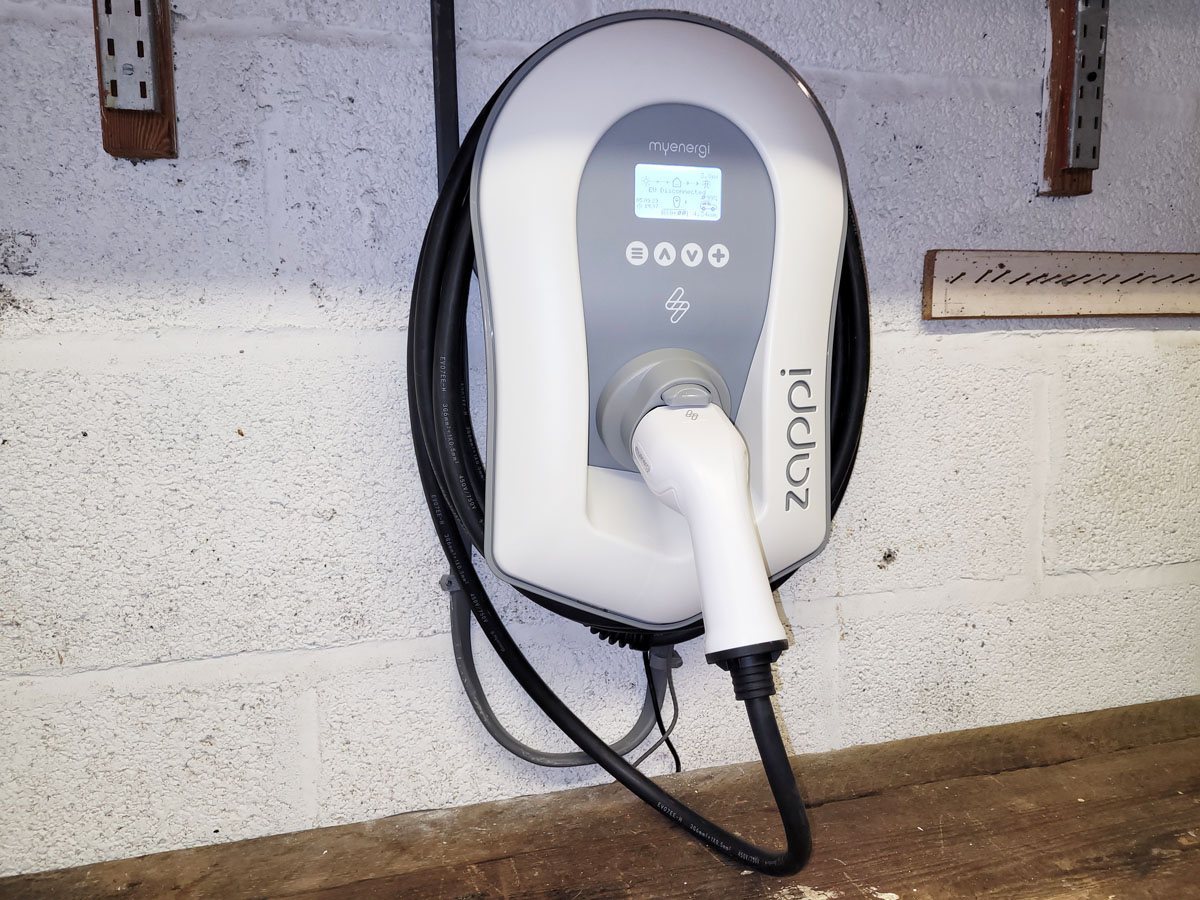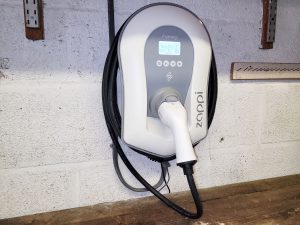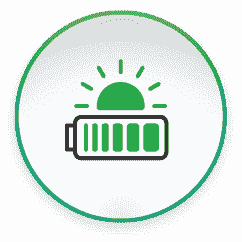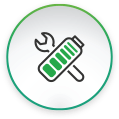1. Introduction
As electric vehicles (EVs) become more popular we are installing more EV charge points in conjunction with solar and battery systems; this includes adding solar and battery to a house that already has a charge point, and adding a battery and charge point to a house that already has solar. The only charge point we install is the Myenergi Zappi because of its advanced functions when used in conjunction with solar, so that’s the one we’ll be concerned with here.
Home batteries work by charging up with any solar they see leaving the house to the grid, and they discharge when they see power being drawn from the grid. This means that, by default, they will start to empty when a charge point starts to take power to charge an EV, in other words the result of an EV charging session can be an empty home battery (particularly as EV batteries tend to be much bigger than home batteries). A similar situation happens with other systems that use excess solar such as an iBoost or Eddi immersion heater diverter – they can take charge out of the battery.
Many homeowners are happy with this and they don’t mind whether electricity going into the car or immersion has come from solar, battery or grid. However, some homeowners want to be able to charge their car whenever they want without it emptying their battery. That can be difficult to achieve, and here we’ll look at the various approaches available and the pros and cons of each.
It should be noted that the Zappi can charge either at full power (Fast mode) or using spare solar (Eco/Eco+ modes) and these different modes are affected differently in the various situations. All references to Zappi menus and commands assume the latest Zappi firmware.
2. Myenergi Libbi Hybrid Battery System
To have complete control of charging in all situations and to enjoy the full capabilities of the Myenergi app and data reporting, currently the only complete solution is the Libbi battery made by Myenergi.
Method: Use the Zappi menu item Other Settings -> Advanced -> Supply Grid -> Device and set Drain Libbi to NO.
Pros: Charging in Fast and Eco modes does not empty the battery.
Cons: The Libbi is currently more expensive than other home batteries.
To get a quote for a Libbi battery complete our form here.
3. Non-Myenergi Battery Systems
3.1. Software Methods
3.1.1. AC Coupled Home Battery
This is a battery system that has its own AC inverter, i.e. it’s not a hybrid solar inverter. This means there is an AC connection between the batteries and house electrics that can be measured to tell the Zappi when the battery is operating.
Method: Firstly, install a Myenergi CT clamp around the battery connection and set the Zappi to not drain the battery (Supply Grid -> Network Settings -> Battery -> Avoid Drain); this is the approach recommended by Myenergi and our default method of installation. Secondly, set the battery inverter to charge up overnight (this can be at zero charge if you don’t want it to actually fill up).
Pros: Setting the CT clamp correctly allows the Zappi to charge on Eco/Eco+ mode without draining the battery, as the charging level will vary with the available solar while taking account of the battery power level (so it will ramp down if the battery starts to empty). The charging overnight allows for a timed Zappi Fast mode charge at the same time that won’t empty the battery.
Cons: A Fast mode charge at any other time will empty the battery.
This approach is covered in detail here: How to Configure a Myenergi Zappi to Solar Charge Without Emptying Your Home Battery.
To get a quote for an AC battery complete our form here.
3.1.2. DC Coupled Home Battery
This is a hybrid solar/battery inverter system. As there isn’t an available AC power connection for the Zappi to monitor it is difficult for the Zappi to avoid draining the battery.
Method: Set an export margin on the Zappi (say 50W) – for full details see the Myenergi guidance here. You can also use the same overnight charging trick as described for the AC battery.
Pros: The export margin allows solar to go to the battery first in Eco+ mode, and then the Zappi only starts to charge when it sees solar export greater than the margin. The charging overnight allows for a timed Zappi Fast mode charge at the same time that won’t empty the battery.
Cons: A Fast mode charge at any other time will empty the battery. Also, the export margin can mean that you have that amount of solar energy being lost to the grid since the Zappi can’t use any energy below this margin.
To get a quote for a DC battery complete our form here.
4. Hardware Method
For a non-Libbi battery system if it is imperative to completely avoid any drain of the battery then the only way to achieve this is by wiring the house appropriately.
Method: Make the Zappi take the electricity as soon as it enters the house, ahead of everything else. Specifically, the CT clamp for the battery system is put around the supply upstream of the Zappi so the Zappi essentially becomes invisible to the battery – the battery doesn’t know it’s there and therefore can’t respond to it by discharging. Myenergi provide some examples of this approach here.
Pros: This method ensures the Zappi can’t empty the battery, and this can be particularly important in a power cut backup system.
Cons: There can be unintended consequences of rewiring and of having the systems ignorant of each other. These include:
- The battery software, which is usually the best interface for monitoring your solar generation and house consumption, will not know anything about your charger consumption.
- You cannot choose to charge the car from the battery – this also means that you would be unable to use the charge point in a power cut.
- The rewiring can be significant, particularly for a retrofit (where the battery is being added to an existing charge point installation).
5. Conclusion
There are multiple ways to setup a system comprising solar, battery and EV equipment so that the battery and charge point work well together.
Do get in touch with us if you are interested in getting a home battery and an EV charge point and we will configure the system in the best way for you.






